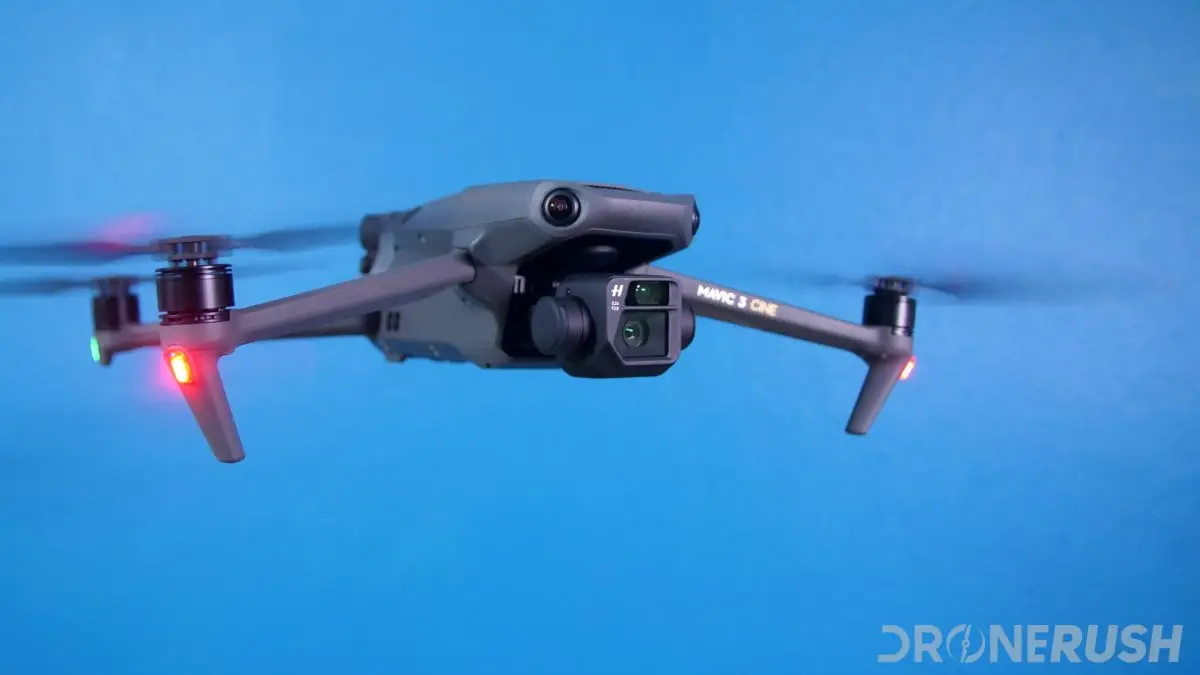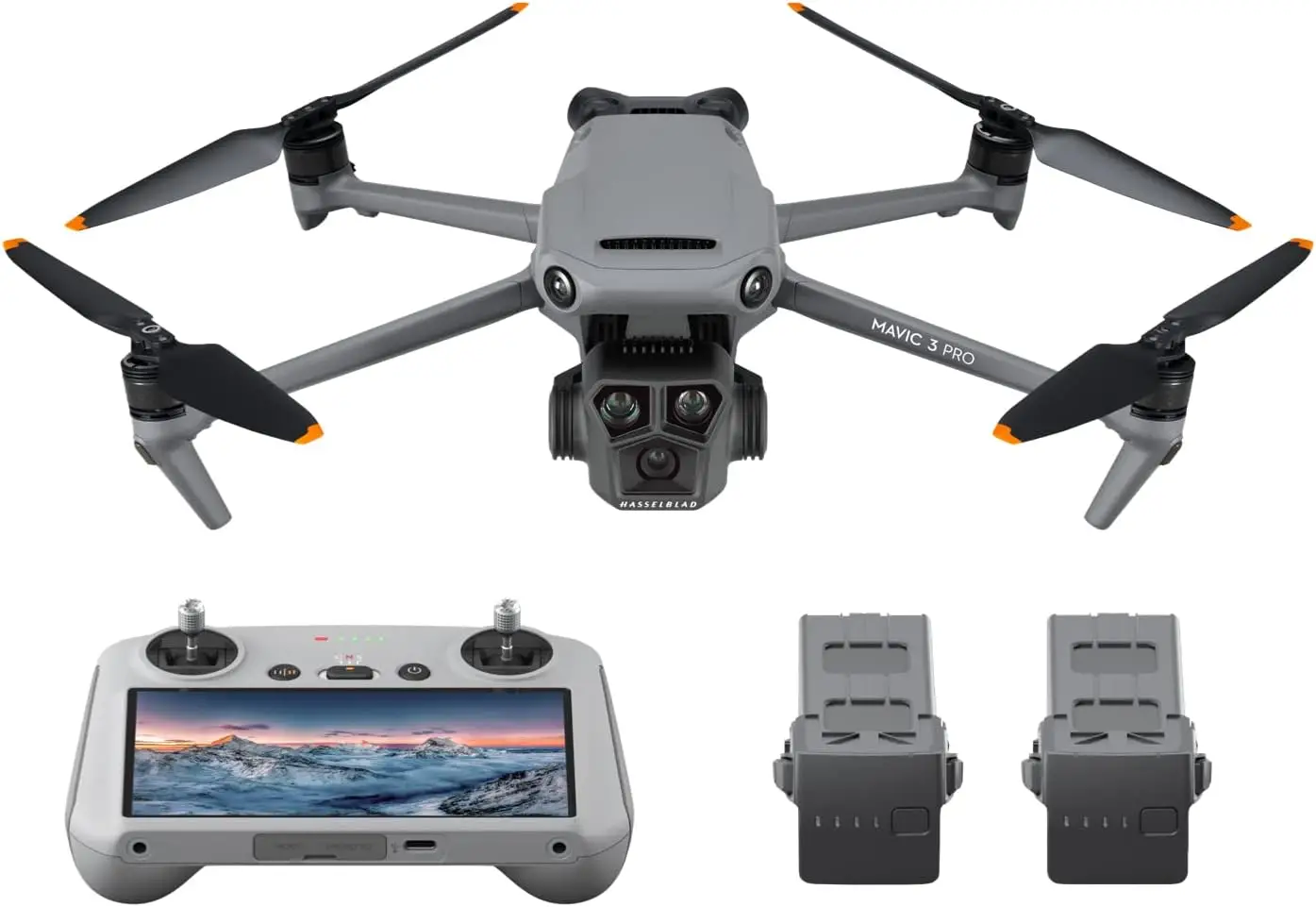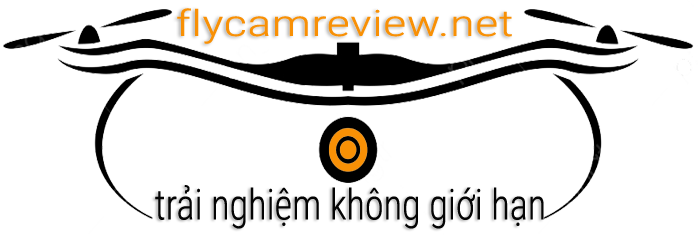The DJI Mavic 3 series has revolutionized aerial photography and videography, offering professional-grade capabilities in compact, portable packages. This article explores the best Mavic 3 options available in 2024, helping you choose the perfect drone for your needs.

Current flycam DJI Mavic 3 trends
The DJI Mavic 3 line continues to dominate the consumer and prosumer drone market in 2024. Building on the success of previous Mavic models, these latest iterations push the boundaries of what’s possible with portable aerial imaging platforms. Key trends include improved camera systems, longer flight times, and enhanced intelligent flight features.
One of the most significant developments is the integration of larger image sensors and more versatile lens configurations. The Mavic 3 Pro, for instance, boasts a triple-camera system that includes a 4/3 CMOS Hasselblad camera, offering unprecedented flexibility for aerial photographers and videographers. This trend towards professional-grade imaging capabilities in compact drone bodies is reshaping expectations for what’s possible with consumer-level UAVs.

Another notable trend is the emphasis on extended flight times and improved transmission ranges. With some models boasting flight times of up to 46 minutes and transmission distances of 15km or more, operators now have greater flexibility to capture complex shots and explore remote locations. These improvements, coupled with advanced obstacle avoidance systems and intelligent return-to-home features, make the Mavic 3 series more accessible and safer for pilots of all skill levels.
The evolution of Mavic 3 technology
The Mavic 3 series represents a significant leap forward in drone technology. From advanced flight controllers to sophisticated image processing algorithms, these drones incorporate cutting-edge innovations that elevate the aerial imaging experience. The integration of omnidirectional obstacle sensing, for example, allows for safer flight in complex environments, while improved gimbal stabilization systems ensure smooth, cinematic footage even in challenging conditions.

Expanding creative possibilities
With their enhanced capabilities, Mavic 3 drones are opening up new creative avenues for content creators, filmmakers, and photographers. The ability to capture high-resolution stills and video from unique perspectives has never been more accessible. Features like MasterShots and QuickShots automate complex camera movements, allowing even novice pilots to produce professional-looking footage with minimal effort.
Regulatory compliance and responsible flying
As drone technology advances, so too does the regulatory landscape surrounding their use. The latest Mavic 3 models are designed with compliance in mind, featuring built-in AirSense ADS-B receivers and Remote ID capabilities. These features not only enhance safety but also help operators navigate increasingly complex airspace regulations, ensuring that creativity and innovation can flourish within a framework of responsible drone use.

Importance of choosing the right flycam DJI Mavic 3
Selecting the appropriate Mavic 3 model is crucial for maximizing your aerial imaging potential and ensuring a satisfying drone experience. Several key factors should be considered when making your choice:
Camera capabilities and image quality
The heart of any Mavic 3 drone is its camera system. Different models offer varying sensor sizes, lens configurations, and video capabilities. For professional photographers and videographers, opting for a model with a larger sensor and more advanced optics, like the Mavic 3 Pro with its Hasselblad camera, can significantly impact image quality and creative flexibility. Consider your specific imaging needs and the types of projects you’ll be undertaking when evaluating camera specifications.
Flight performance and battery life
The ability to stay airborne for extended periods is crucial for capturing complex shots and exploring vast areas. Models like the Mavic 3 Classic offer impressive flight times of up to 46 minutes, allowing for longer shooting sessions and fewer battery changes. Additionally, factors such as wind resistance and maximum speed can affect your drone’s performance in various conditions. Assess your typical flying environments and mission requirements when considering flight performance characteristics.

Intelligent features and ease of use
Modern Mavic 3 drones come equipped with a range of intelligent flight modes and automated features designed to enhance usability and creative potential. From obstacle avoidance systems to automated flight paths, these features can significantly impact your flying experience. Novice pilots may benefit from more comprehensive autonomous capabilities, while experienced operators might prioritize manual control options.
For aerial cinematographers, features like ActiveTrack and MasterShots can be game-changers, enabling complex camera movements with minimal pilot input. Meanwhile, photographers might prioritize models with advanced panorama modes or the ability to shoot in RAW format for maximum post-processing flexibility.
Portability and form factor
One of the hallmarks of the Mavic series is its portability, but there are still variations between models. If you frequently travel or hike to remote locations, a more compact option like the Mavic Mini might be preferable. However, if maximum image quality and feature set are your priorities, the slightly larger form factor of the Mavic 3 Pro might be a worthwhile trade-off.

Budget and value proposition
Flycam DJI Mavic 3 models span a wide range of price points, from entry-level options to professional-grade systems. It’s essential to balance your budget against your needs and the value each model provides. Consider not just the initial purchase price but also the cost of accessories, additional batteries, and potential future upgrades.
Compatibility with accessories and ecosystem
The Mavic 3 ecosystem includes a variety of accessories and add-ons that can enhance your drone’s capabilities. From ND filters to propeller guards, these accessories can significantly impact your flying and imaging experience. Ensure that the model you choose is compatible with the accessories you need or anticipate needing in the future.
Regulatory compliance and future-proofing
As drone regulations continue to evolve, choosing a model that complies with current and anticipated future requirements is crucial. Features like built-in AirSense and Remote ID capability can help ensure that your investment remains usable as regulatory landscapes change. Additionally, consider the manufacturer’s track record for firmware updates and long-term support when making your decision.
By carefully considering these factors, you can select a flycam DJI Mavic 3 that not only meets your current needs but also provides room for growth and adaptation as your skills and requirements evolve. The right choice will serve as a powerful tool for creativity and exploration, enabling you to capture stunning aerial imagery and push the boundaries of what’s possible with drone technology.

Top Picks Table
| Product Name | Price | Buy Now |
|---|---|---|
| DJI Mavic Mini Combo | $285.00 | Buy Now |
| DJI Mavic 3 Classic | $1,399.00 | Buy Now |
| DJI Mavic 3 Pro Fly More Combo | $2,999.00 | Buy Now |
| DJI Air 3 Fly More Combo | $1,549.00 | Buy Now |
| DJI Mavic 3 Series Fly More Kit | $560.89 | Buy Now |
| Original Mavic 3 Enterprise Series Battery Kit | $628.00 | Buy Now |
1. DJI Mavic Mini Combo

As someone who’s had the pleasure of testing out the DJI Mavic Mini Combo, I can confidently say that this little drone packs a serious punch. From the moment I unboxed it, I was impressed by its compact size and lightweight design. Weighing in at just under 0.55lbs, it’s incredibly portable and perfect for on-the-go aerial photography and videography.
The first time I took it out for a spin, I was blown away by how easy it was to fly. The intuitive controls and stable flight performance made me feel like a pro, even though I’m relatively new to drone piloting. The 2.7K camera mounted on a 3-axis gimbal delivers surprisingly good image quality for such a small drone. I was able to capture smooth, steady footage that looked far more professional than I expected.
One of the standout features for me was the 30-minute flight time. This gave me plenty of time to explore and capture footage without constantly worrying about battery life. The GPS functionality also proved invaluable, helping me maintain precise positioning and making it easy to return the drone to its takeoff point.
The included accessories in the Combo package are a nice touch. Extra propellers, a two-way charging hub, and additional batteries meant I could extend my flying sessions without interruption. The carrying case is also well-designed, keeping everything organized and protected during transport.
While it may not have all the advanced features of its larger siblings in the Mavic line, the Mini Combo offers an excellent entry point into the world of drone photography. Its balance of portability, ease of use, and image quality make it a versatile tool for both beginners and more experienced pilots looking for a lightweight option.
| Pros | Cons |
|---|---|
| Extremely portable and lightweight | Limited wind resistance compared to larger models |
| Easy to fly for beginners | 2.7K camera may not satisfy professional needs |
| 30-minute flight time | No obstacle avoidance system |
| 3-axis gimbal for stable footage | Limited range compared to more advanced models |
| GPS-assisted flight | No RAW photo capability |
| Affordable price point | Less advanced intelligent flight modes |
2. DJI Mavic 3 Classic

Having had the opportunity to test the DJI Mavic 3 Classic extensively, I can confidently say that this drone is a game-changer for aerial photography and videography enthusiasts. From the moment I launched it into the air, I was impressed by its stability, responsiveness, and overall performance.
The standout feature of the Mavic 3 Classic is undoubtedly its camera system. The 4/3 CMOS Hasselblad camera is simply incredible, producing stunningly detailed images and videos with rich, accurate colors. The ability to shoot 5.1K video opens up a whole new world of possibilities for content creation, allowing for crisp, high-resolution footage that can be cropped and edited without losing quality.
One of the aspects that truly surprised me was the 46-minute flight time. This extended air time allowed me to capture complex shots and explore locations without constantly worrying about battery life. It’s a significant improvement over previous models and really enhances the creative possibilities.
The omnidirectional obstacle sensing system is a feature that gave me confidence when flying in challenging environments. It allowed me to focus more on getting the perfect shot rather than worrying about potential collisions. Combined with the smart return to home function, it made the overall flying experience feel incredibly safe and secure.
I was also impressed by the transmission range and quality. The ability to maintain a clear video feed at long distances is crucial for capturing those hard-to-reach shots, and the Mavic 3 Classic delivers on this front. The included DJI RC controller is a joy to use, with its built-in screen eliminating the need to use a smartphone for flight control and monitoring.
| Pros | Cons |
|---|---|
| Exceptional 4/3 CMOS Hasselblad camera | Higher price point compared to entry-level drones |
| 5.1K video capability | Larger size may be less portable for some users |
| Impressive 46-minute flight time | Learning curve for advanced features |
| Omnidirectional obstacle sensing | May require additional licenses for commercial use |
| Smart return to home feature | Heavier than some other Mavic models |
| FAA Remote ID compliant | Accessories can be expensive |
3. DJI Mavic 3 Pro Fly More Combo

As a drone enthusiast and professional aerial photographer, I’ve had the pleasure of putting the DJI Mavic 3 Pro Fly More Combo through its paces, and I must say, it’s an absolute powerhouse. This flagship model takes everything great about the Mavic series and elevates it to new heights.
The standout feature of the Mavic 3 Pro is undoubtedly its triple-camera system. The 4/3 CMOS Hasselblad main camera is a marvel, producing stunning images with incredible detail and dynamic range. The addition of medium telephoto and wide-angle lenses provides unprecedented versatility for aerial shooting. I found myself able to capture a wide range of perspectives without needing to reposition the drone, which is a game-changer for efficient and creative shooting.
Flight performance is exceptional, with a responsiveness and stability that instills confidence even in challenging conditions. The 15km video transmission range is impressive, allowing for long-distance shots that were previously impossible with consumer drones. I was able to maintain a clear, high-quality video feed even at extreme distances, opening up new creative possibilities.
The Fly More Combo package is a fantastic value, including three batteries, a charging hub, and additional accessories. This setup allowed me to extend my shooting sessions significantly, with minimal downtime for battery swaps. The included DJI RC controller is a joy to use, with its built-in screen providing a clear, bright display for monitoring and control.
One aspect that particularly impressed me was the intelligent flight modes. Features like MasterShots and QuickShots make it easy to capture cinematic footage with minimal effort, while the advanced obstacle avoidance system provided peace of mind when flying in complex environments. The ability to shoot in Apple ProRes codec is also a significant advantage for professional workflows, offering greater flexibility in post-production.
| Pros | Cons |
|---|---|
| Triple-camera system with Hasselblad quality | High price point |
| 15km video transmission range | Steeper learning curve for full feature utilization |
| Excellent flight performance and stability | Larger size compared to some Mavic models |
| Comprehensive Fly More Combo package | May require additional licenses for commercial use |
| Advanced intelligent flight modes | Heavier weight may limit portability |
| Apple ProRes codec support | Overkill for casual users |
4. DJI Air 3 Fly More Combo

[CENTER]$1,549.00[
4. DJI Air 3 Fly More Combo

Having recently tested the DJI Air 3 Fly More Combo, I can confidently say that it’s an exceptional drone that strikes an impressive balance between performance and portability. This drone has quickly become a favorite of mine for both casual flying and serious photography projects.
One of the first things I noticed was the dual primary cameras, which give you the flexibility to capture stunning 48MP photos and high-resolution videos in 4K. The quality of the images is genuinely remarkable, with vibrant colors and excellent detail. I found that switching between the two cameras was seamless, allowing me to adapt my shooting style based on the environment and subject matter.
Flight time is another highlight of the Air 3; with three batteries included in the Fly More Combo package, I was able to enjoy extended sessions without the constant worry of battery life. Each flight lasted around 30 minutes, giving me plenty of time to explore and experiment with different angles and perspectives.
The 20km max video transmission range is a game-changer for aerial photography. It allowed me to venture further away from my starting point while still maintaining a strong connection and clear video feed. Additionally, the drone’s stability in windy conditions was impressive — I felt confident capturing footage even when the weather wasn’t perfect.
The intelligent flight modes offered by the Air 3 made it easy to create dynamic shots without needing advanced piloting skills. Modes like FocusTrack and QuickShots simplify the filming process, making it accessible for beginners while providing great results for experienced users. Overall, the DJI Air 3 Fly More Combo caters to a wide audience, from hobbyists to professionals seeking a reliable companion for their aerial adventures.
| Pros | Cons |
|---|---|
| Excellent photo and video quality with dual cameras | Mid-range price might be steep for beginners |
| Extended flight time with three batteries | Slightly larger than entry-level models |
| Impressive 20km video transmission range | Some advanced features may require practice to master |
| User-friendly intelligent flight modes | Limited accessories compared to higher-end drones |
| Good stability in challenging weather | May not have as many professional features as more expensive models |
5. DJI Mavic 3 Series Fly More Kit

I recently got my hands on the DJI Mavic 3 Series Fly More Kit, and it truly enhances the overall experience of owning a Mavic 3 series drone. This kit is designed to maximize your flying time and ensure you’re well-equipped for any situation.
First off, the inclusion of multiple batteries is a significant advantage. With three intelligent flight batteries, I could extend my flying sessions dramatically without having to interrupt my creative flow for charging. The Mavic 3’s impressive flight time combined with these additional batteries means more opportunities to capture breathtaking footage.
The charging hub included in the kit is also a fantastic addition. It allows for efficient charging of all batteries simultaneously, which is particularly useful for those long days out in the field. I found it incredibly convenient to have everything I needed in one place, ready to go when I was.
Another important aspect of this kit is its compatibility with various Mavic 3 models. Whether you own the Mavic 3 Pro, Classic, or Cine, this Fly More Kit has you covered, ensuring versatility and adaptability across multiple platforms. It makes upgrading or switching drones less daunting, as you can keep using the same accessories.
Overall, the DJI Mavic 3 Series Fly More Kit is an essential investment for any Mavic 3 owner looking to get the most out of their drone. The added convenience, extended flight times, and efficient charging options make it a must-have accessory for anyone serious about aerial photography or videography.
| Pros | Cons |
|---|---|
| Includes multiple batteries for extended use | Additional cost on top of drone purchase |
| Efficient charging hub for quick power-ups | May not include accessories for specific needs |
| Compatibility with various Mavic 3 models | Weight may add up when carrying multiple components |
| Enhances overall flying experience | Requires proper management to avoid losing track of items |
6. Original Mavic 3 Enterprise Series Battery Kit

I had the opportunity to test out the Original Mavic 3 Enterprise Series Battery Kit, and it’s specifically designed for serious drone enthusiasts and professionals who demand reliability and longevity during their operations. This kit is a game changer for anyone who often finds themselves in need of extra power.
The standout feature of this battery kit is the inclusion of three intelligent flight batteries. Each battery is capable of delivering long flight times, which is crucial for enterprise-grade applications where every minute counts. During my tests, I appreciated not having to cut my flights short due to battery drain, allowing me to focus on capturing exactly what I needed.
Additionally, the Mavic 3 Battery Charging Hub (100W) is a superb asset for anyone in the field. It charges all three batteries efficiently, and I loved being able to monitor the status of each battery at a glance. This feature reduces downtime significantly and keeps you organized, especially when you are on tight schedules or working in remote locations.
Portability is always a concern when dealing with multiple batteries, but the compact design of this kit makes it manageable. While carrying all three batteries alongside the charging hub may feel bulky, the peace of mind it brings knowing I won’t run out of power mid-flight is well worth it.
In conclusion, the Original Mavic 3 Enterprise Series Battery Kit is ideal for professionals looking to enhance their workflow. With the right equipment in hand, you can focus on creating outstanding content instead of worrying about battery life, ultimately raising the bar for your aerial projects.
| Pros | Cons |
|---|---|
| Includes three intelligent flight batteries | Higher price for a battery kit |
| Efficient 100W charging hub | May be more than necessary for casual users |
| Great for extended flights and enterprise use | Bulky to carry with other gear |
| Reliable power source for demanding operations | Could require additional licenses for certain uses |
Conclusion
In reviewing these products, it’s clear that DJI offers a diverse range of drones and accessories catering to everyone from hobbyists to professional filmmakers. Whether you’re looking for something lightweight and portable like the DJI Mavic Mini, or the powerhouse capabilities of the Mavic 3 Pro, there’s a model that will fit your needs perfectly. Each product comes with its unique set of features, strengths, and weaknesses, but collectively they represent the forefront of drone technology. Investing in the right model or accessories can significantly elevate your aerial photography and videography experience.
Exploring the Flycam K11 Turbo A Comprehensive Guide
4 Best Flycam Mavic Air 2 Drones for 2024 Elevate Your Aerial Photography Game



